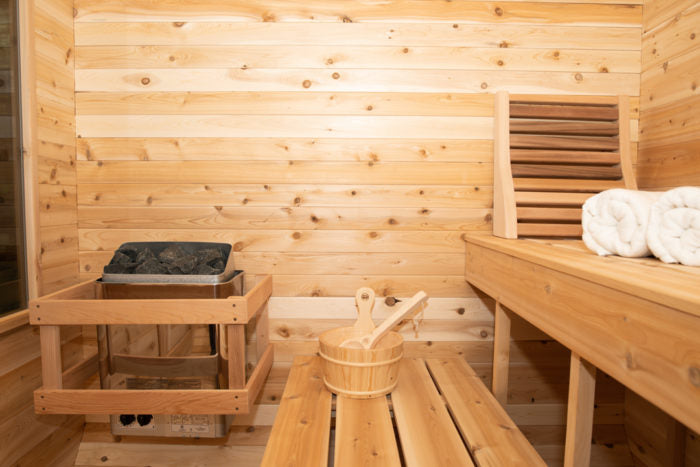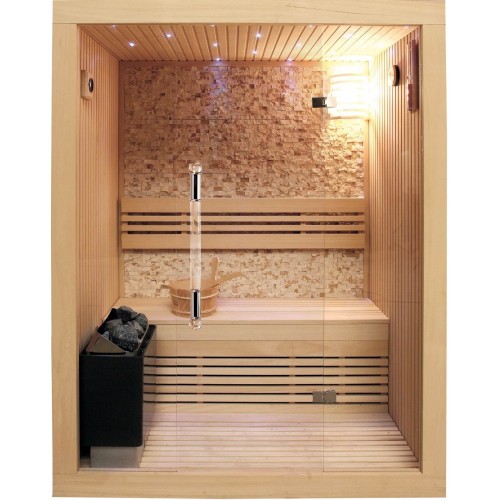Indicators on Traditional Sauna You Should Know
Indicators on Traditional Sauna You Should Know
Blog Article
The Ultimate Guide To Traditional Sauna
Table of ContentsOur Traditional Sauna PDFsThe 2-Minute Rule for Traditional SaunaTraditional Sauna - QuestionsTraditional Sauna - TruthsThe Ultimate Guide To Traditional Sauna
Most of the weight lost in a sauna is water loss and is re-gained upon rehydrating. Without a question sauna can be a vital component of a healthy weight loss program. To consider the distinctions between standard and IR saunas, I will separate these into proven, academic, and made differences.Thus, the hottest factor in the saunawhich goes to the ceiling straight above the sauna heateris generally in between 185 and 190 F. Claims that a standard sauna goes beyond 200 F is merely not real and not relevant for electrical saunas sold in the United States. The temperature for a far-infrared sauna is typically established in between 120 and 140 F; nevertheless, unlike the standard sauna, the objective in and IR space is not to accomplish a high temperature.

When a conventional sauna has been correctly heated, the sauna walls are warm, the air temperature has achieved set temperature and the rocks are extremely warmed. As an interesting side note, the warmed walls and the rocks are producing far-infrared warm, integrated with the warmed air, to create an "covering warmth".
The Best Guide To Traditional Sauna
When the heat is achieved, the aspects cycle on and off to preserve the heat. Most typical sauna customers enjoy putting water over the rocks to produce heavy steam to raise sauna humidity levels. The advantages of putting water over the rocks consist of: making the area a lot more comfortable, moistening the nasal flows, and permitting the use of aromatherapy by mixing crucial oils with the water.

When the energy goes into the body, it triggers the body temperature to increase and ultimately results in sweating. In an infrared sauna it's essential for the emitters/heaters to remain on practically frequently. Since there is no mass of rocks to retain heat, the sauna will certainly cool down if the emitters shut off.
Traditional Sauna Can Be Fun For Anyone
As discussed over, the sauna bather in an infrared space wishes to place himself before operating emitters to obtain maximum advantage from the heat. The home heating time for both spaces can be really different, depending on just how the rooms are utilized. For a conventional sauna, a bather should allow 30-40 mins for the room to attain a wanted temperature level and to correctly pre-heat the rocks.

A well built sauna will commonly achieve a temperature of 150-160 F in about 30-40 minutes (Traditional Sauna). For hotter temperature levels, the space might need to warm for a longer period. Once the space achieves set temperature, the heater will certainly cycle on and off, generally running concerning 50% of the time. The shielded walls and the warmed rocks will keep the room hot and go to this website at steady temperature levels.
To some, 15 mins was "wasted" while the infrared energy heated up the wood panels as opposed to heating up a body, while others find a pre-heated space to be much more comfortable and believe an elevated beginning temperature level is essential to begin perspiring. The length click this link of recommended use for each space is approximately the same (10-15 minutes per session); nevertheless, due to the lower air temperature levels and the ability to really feel the effects of infrared heat faster than a typical sauna, it is not uncommon for a person to invest a total of 20-30 minutes in an infrared sauna.
The Of Traditional Sauna

The ordinary cost per kWH of electrical power in the united state is approximately $0.11, so a 4.5 kW heating unit will certainly cost about $.50 to compete one hour, if the heating system runs constantly for one hour. Generally a sauna heater will run for 75% of the first hour and 50% of subsequent hours on since the elements cycle once the set temperature level is accomplished.
A 2 person far-infrared area is usually literally smaller sized than a traditional sauna, often about 4' x 4' or smaller. The IR home heating system is commonly 1.5-1.7 kW utilizing a 120 volt 15 amp plug-in solution. Given that the area can be made use of earlier than a sauna room, we will assume the room is utilized for to of an hour consisting of warmth up time.
There is a seldom discussed distinction in the social experience between the two areas. While our society has actually shed several of the social advantage of the typical sauna experience, it can be really socially fulfilling (Traditional Sauna). From family members time in the sauna, to heart-felt conversations with substantial others, to sauna partiesthe standard sauna experience can bring about intimate socializing
Facts About Traditional Sauna Uncovered
Most greater end infrared areas include tinted light therapy, noise systems and full-glass fronts.
Report this page